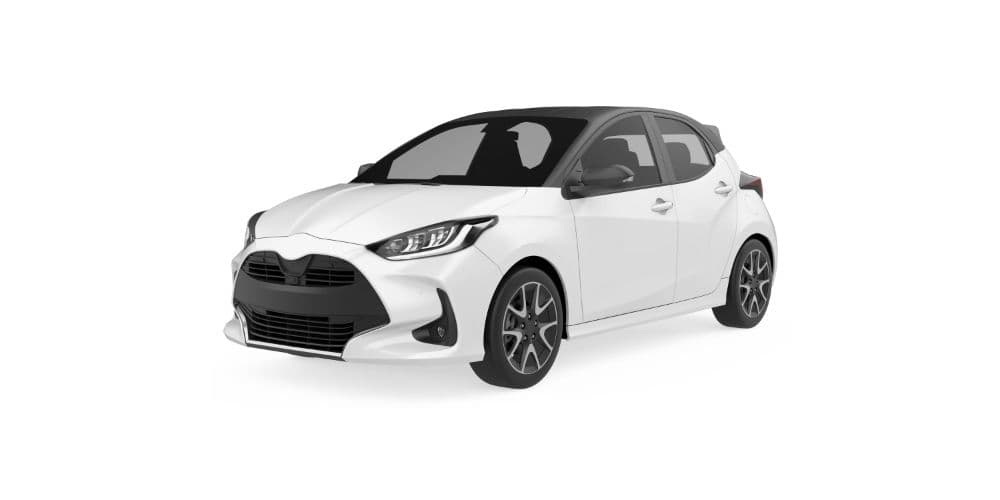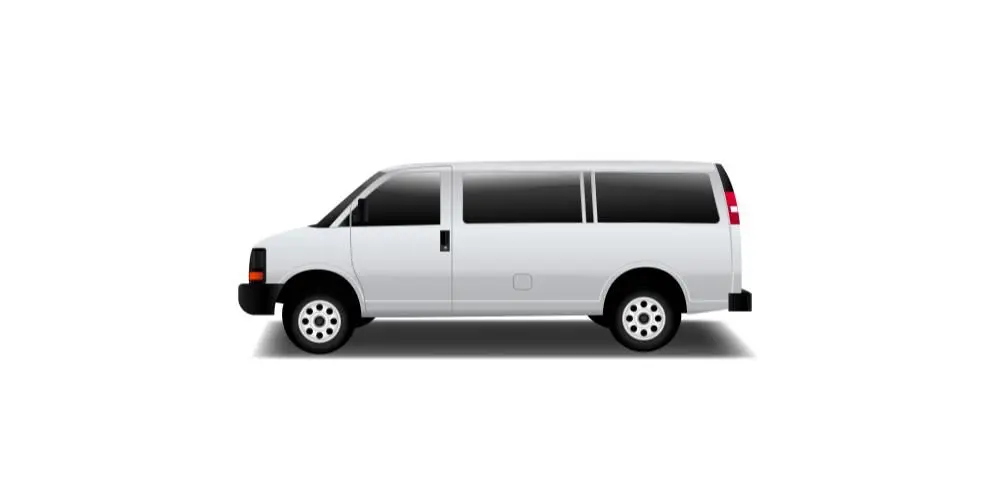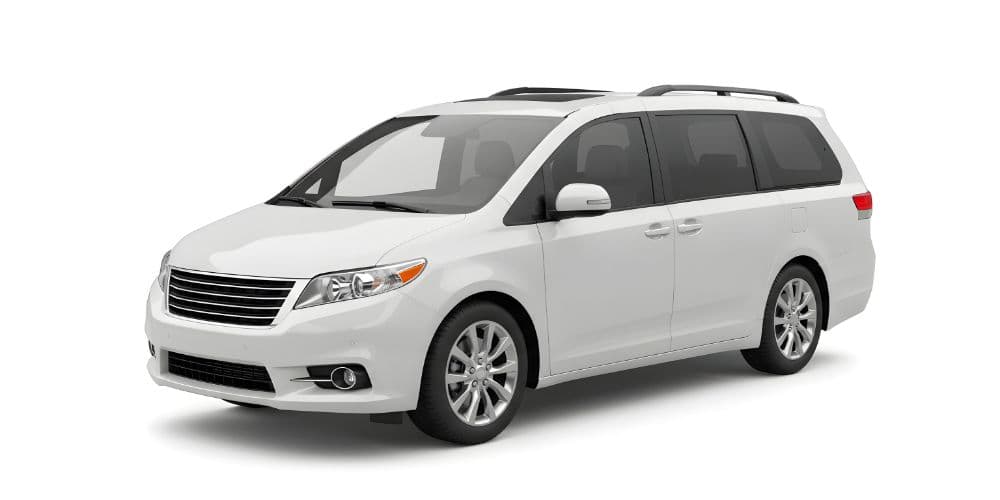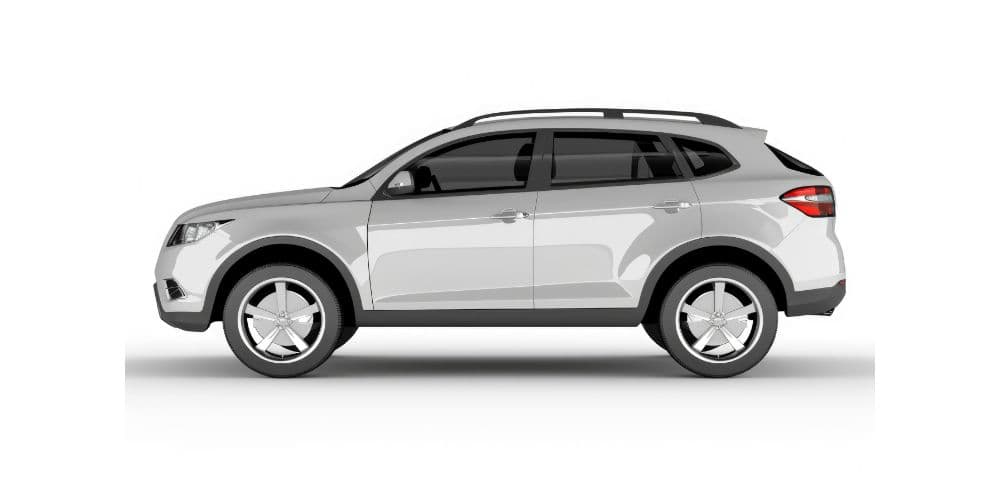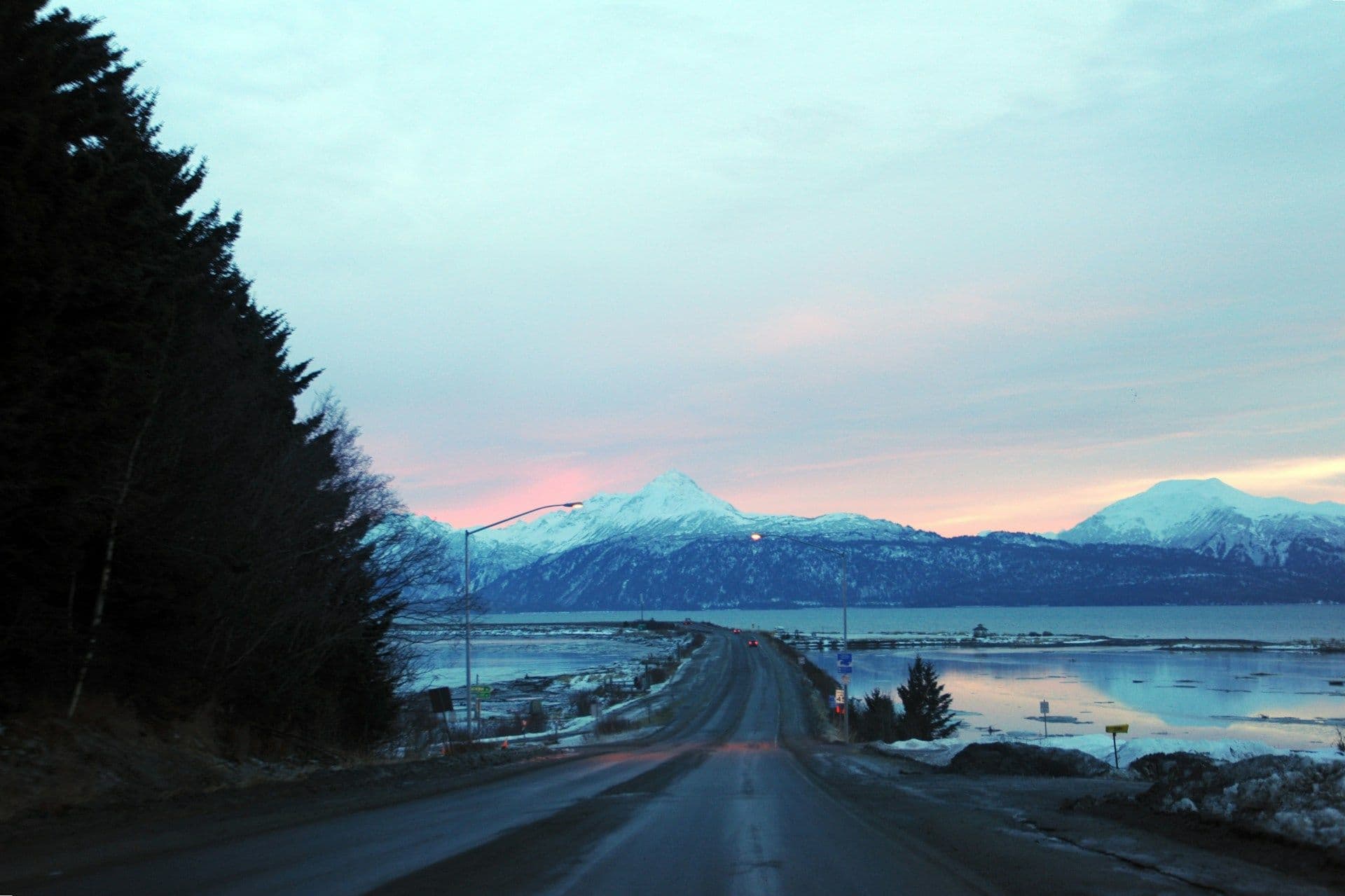
Anchorage to Seward Drive: Best Stops, Exit Glacier & Tips
Anchorage to Seward: Best Stops & Tips
Trip Snapshot:
- Distance & Drive Time: ~127 miles (204 km) from Anchorage to Seward, roughly 2.5 hours without stops. In reality, you’ll want a full day one-way with stops, or 2+ days round-trip. Many travelers spend 2–3 days on this route to take in all the sights and enjoy activities in Seward.
- Best Time: Mid-May through early September. Summer offers the best weather, the fullest range of activities (daily wildlife cruises, etc.), and long daylight for sightseeing. Late spring and early fall are less crowded but still beautiful (snow may dust the mountaintops in September). Avoid winter unless experienced with Alaska driving the highway is maintained year-round, but icy conditions and avalanche closures can occur in the colder months.
- Ideal For: Nature enthusiasts, photographers, and families basically anyone who wants to experience Alaska’s coastal beauty. This trip is perfect for those eager to see glaciers, marine wildlife (whales, puffins, sea otters), and gorgeous mountain-meets-ocean landscapes. Adventure seekers will find hiking, kayaking, and fishing opportunities, while road trip leisure lovers can enjoy scenic viewpoints and quaint towns.
- Route Summary: Follow the Seward Highway (AK-1) south from Anchorage as it hugs the dramatic shoreline of Turnagain Arm. The road winds between ocean water and the base of the Chugach Mountains, offering jaw-dropping views around every bend. You’ll pass through the ski town of Girdwood, then continue past turquoise glacial lakes and alpine meadows at Turnagain Pass. At Tern Lake Junction (near Moose Pass), bear left onto AK-9 which leads the final miles to Seward, a picturesque harbor town on Resurrection Bay. The drive is a there-and-back route (the only road into Seward), but the scenery is so spectacular you won’t mind retracing it.
- Top 3 Highlights: A Kenai Fjords National Park cruise from Seward to see glaciers and wildlife up close, walking up to the toe of Exit Glacier, and spotting wild animals like bears, moose, or even beluga whales along the route (especially at places like the Wildlife Conservation Center and Turnagain Arm).
Route Overview: The journey from Anchorage to Seward is often cited as one of America’s most scenic drives, and for good reason. As you depart Anchorage, you’ll immediately skirt the shoreline of Turnagain Arm, a branch of Cook Inlet framed by steep mountains. Keep an eye out over the water if the tide is out, you’ll see vast mudflats; if the tide is coming in, you might witness the bore tide, a unique wave that rushes down the arm. In summer, lucky observers might even spot the white backs of beluga whales chasing salmon in the inlet’s waters near spots like Beluga Point. The highway itself clings to the mountainsides, with pullouts at scenic viewpoints (Bird Point, Beluga Point) to pause and take photos of the epic landscape.
About 40 miles from Anchorage, you’ll reach Girdwood, a year-round resort town tucked in the forested valley below Mount Alyeska. Girdwood is worth a stop for its cafes and the Alyeska Aerial Tram, which can whisk you up to a 2,300-foot mountain viewpoint in summer. Continuing on, the road leaves the coastline and ascends into the mountains. You’ll pass through Turnagain Pass (elevation ~900 feet) where in summer the meadows are spangled with wildflowers; in winter, this is a popular snowmobiling and backcountry ski area. As you descend, watch for the shimmering Trail Lakes and the cute community of Moose Pass you might notice a historic water wheel by the road there. Finally, you’ll arrive at Seward, nestled between towering mountains and the sea. With colorful boat harbors, eateries, and the cries of gulls, Seward feels like a quintessential Alaska coastal town. It’s the gateway to Kenai Fjords National Park, and even from shore you can often see the blue hint of glaciers across the bay.
Driving notes: The Seward Highway is a National Scenic Byway and is well-paved the whole way, but it’s also a two-lane road that sees a lot of summer traffic. Plan for a leisurely pace you may find yourself behind RVs or tour buses. Use passing lanes on hills and designated pullouts to pass or let others pass, as appropriate. Weekends can be busy, and on Sundays in summer a northbound convoy returns to Anchorage in the afternoon/evening, so consider timing your drive to avoid the heaviest flows (leaving early or late in the day helps). Also note that weather can be very different from start to finish: Anchorage might be sunny while Seward is drizzling (Seward sits in a coastal rainforest zone). Always check the weather before heading out, and be prepared for rain or fog especially near the coast. There are no tolls on this route (the only toll-like fee in the region is the Whittier Tunnel, which is a separate side trip). One safety note: the first part of the drive along Turnagain Arm has sheer drop-offs and no divider keep your eyes on the winding road (let a passenger do the looking, or use pullouts) and obey the 55 mph speed limit. Finally, wildlife on the road is a possibility watch for Dall sheep on cliffs, moose crossing near Girdwood, and even black bears occasionally near streams; drive alert, especially at dawn or dusk.
Top Stops & Experiences: (listed north to south)
- Potter Marsh Boardwalk (Anchorage)Family-friendly wildlife viewing. Just a few miles south of Anchorage along the highway, you’ll find Potter Marsh, an idyllic wetlands at the end of the Anchorage Coastal Wildlife Refuge. A free, accessible boardwalk extends over the marsh, allowing you to spot dozens of bird species up close. In summer, you might see spawning salmon in the waters below or even a moose munching on aquatic plants. It’s a quick stop (15–30 minutes) that offers a breath of fresh air and a chance to stretch your legs while scanning for Arctic terns, bald eagles, and other wildlife.
- Beluga Point & Turnagain Arm ViewpointsScenic overlooks. As you drive along Turnagain Arm’s edge, take advantage of the pullouts at Beluga Point (Mile 110) and Bird Point (Mile 96) for stunning panoramas. Beluga Point is named for the beluga whales that can sometimes be seen in the inlet’s silty waters (best during the July–August salmon runs, usually around high tide). Even if the whales are shy, the view is outstanding slate-gray ocean extending to distant peaks. At Bird Point, a larger pullout, there are interpretive signs explaining the bore tide phenomenon and the geology of this dramatic fjord-like valley. These stops are quick and right off the highway, but they’re core memories in the making don’t forget your camera.
- Alaska Wildlife Conservation Center (Portage)Family-friendly & educational. At the turnoff to Portage Valley (about 50 miles from Anchorage), make time for the Alaska Wildlife Conservation Center (AWCC). This 200-acre sanctuary is home to rescued Alaskan animals it’s like a drive-through wild zoo, but with a mission of conservation. You can park and walk to see bears, wood bison, musk oxen, moose, lynx, and more, all in spacious enclosures that mimic their natural habitat. Kids love seeing the brown bears lumber close or watching playful foxes. Allow ~1 hour here. It’s one of the best opportunities to safely observe Alaska’s megafauna up close and learn about them (through interpretive signs and staff presentations) before you continue into the wild.
- Portage Glacier & Whittier (Detour)Glacier detour. If you have an extra couple of hours, consider a side trip at the Portage Valley junction. A short 5-mile road off the highway brings you to Portage Lake, where icebergs often float from Portage Glacier looming just out of sight around the corner. The Begich-Boggs Visitor Center here has exhibits and movie about the area’s glaciers. You can also hop on a one-hour Portage Glacier cruise (on the MV Ptarmigan) for an up-close look at the ice face. Additionally, from Portage you can drive through the Anton Anderson Memorial Tunnel (a one-lane tunnel shared by cars and trains!) to emerge in Whittier, a quirky coastal town on Prince William Sound. Whittier is worth it if you want to say you drove the longest highway tunnel in North America and see a unique community nearly all residents live in one building! Note: The tunnel has a toll (~$13) and specific scheduled times for one-way car traffic each hour. This detour can add 2–3 hours round-trip, but offers a fascinating peek at another slice of Alaska’s scenery and history.
- Girdwood & Mount AlyeskaFood, activities & views. Girdwood (aka Alyeska) is a lovely mountain town about 40 miles from Anchorage, known for its ski resort and alpine vibe. Consider stopping for a treat at The Bake Shop (famous for huge sweet rolls and bottomless soup bowls) or grab lunch at a local eatery. If time and weather allow, ride the Alyeska Resort Tram to the mountaintop. In 7 minutes you’ll ascend to 2,300 feet, where viewing decks provide jaw-dropping vistas of Turnagain Arm and surrounding glaciers. There’s even a bore tide telescope up top to scan the inlet. Girdwood also offers short hikes like the Winner Creek Trail (through a lush rainforest environment). Whether you come for food, views, or a leg-stretching hike, Girdwood is an easy and worthwhile stop along the way.
- Exit Glacier (Kenai Fjords National Park)Outdoor adventure. As you approach Seward (about 15-20 minutes out), watch for the signed turn to Exit Glacier Road. This 8-mile detour leads to one of the most accessible glaciers in Alaska. A short hike (0.5 mi each way) from the parking lot brings you to the foot of Exit Glacier, where you can feel the cool air and see how the glacier has retreated over recent decades (markers show the ice’s old extent). There’s a small ranger station at the trailhead, and rangers sometimes offer guided walks. It’s a profound experience to stand near a glacier you’ve just driven to. (Note: The road is open summer-only; in winter, it’s snow-covered and used for snowmachine tours.) Even a quick stop here gives you a taste of Kenai Fjords National Park’s icy wonders without taking a boat.
- Seward Waterfront & Alaska SeaLife Center (Seward)Family-friendly & scenic. Once in Seward, head down to the Seward Harbor and waterfront. Stroll the docks to see fishing boats and maybe a sea otter or two playing in the harbor. At the south end of town, the Alaska SeaLife Center awaits this public aquarium and marine research facility is a must-see. Inside, you’ll encounter sea lions, puffins (in an aviary where you can watch them “fly” underwater), seals, and touch tanks with starfish and other critters. It’s very interactive and educational for all ages. Not to mention, the center’s outdoor decks offer a gorgeous look over Resurrection Bay. After the SeaLife Center, treat yourself to an ice cream or walk the historic downtown (mural-covered buildings and souvenir shops). In the evening, if you’re overnighting, the waterfront campground is a popular spot to park an RV or pitch a tent or simply relax on a bench to watch the sunset paint the sky over the bay.
Where to Eat & Stay:
- Double Musky Inn (Girdwood) A legendary stop for foodies, this rustic cajun-inspired steakhouse in Girdwood has been featured in magazines and TV shows. It’s famous for its pepper steak and massive desserts (the chocolate bread pudding is divine). The walls are decorated with eclectic New Orleans meets Alaska memorabilia. It opens at 5pm for dinner and often has a wait (no reservations), but it’s a fun splurge. Kids are welcome (they might enjoy the rib dinner or fried halibut bites), though it’s a longer dining experience. If you arrive before opening, stroll around the pretty grounds sometimes you’ll find live music on summer weekends.
- Summit Lake Lodge (Moose Pass) Roughly halfway to Seward, Summit Lake Lodge makes for a picturesque meal stop. It sits on a small alpine lake at the top of Turnagain Pass. The lodge restaurant serves up Alaskan comfort food think bison burgers, fish & chips, and homemade pie. You can dine with a view of the lake, and maybe even spot loons or swans on the water. They also have cozy cabins if you decide to break up the trip with an overnight. Even if you just stop for coffee and pie, the peaceful mountain setting will rejuvenate you for the rest of the drive.
- Ray’s Waterfront (Seward) Once in Seward, seafood is the name of the game. Ray’s Waterfront is a classic pick right on the small boat harbor. Its menu features fresh catch from the bay salmon, halibut, crab and the dining room windows look out over the marina and mountains. Watch sea otters bob as you savor king crab legs or beer-battered halibut. It’s upscale casual; families are welcome and there’s a kids’ menu. If you time it right, you might catch the charter fishing boats unloading the day’s halibut haul on the docks outside quintessential Alaska scene!
Lodging:Seward has a range of accommodations, and staying a night (or two) will allow you to enjoy activities without rushing. For hotels, Harbor 360 Hotel and Breeze Inn are popular choices right near the boat harbor (convenient for early morning glacier cruises). They’re comfortable, family-friendly, and some rooms have water views. If you prefer more of a nature escape, look into Seward Windsong Lodge, set just outside town in a wooded setting along the road to Exit Glacier it offers a peaceful vibe and on-site dining, with free shuttles into town. There are also many small B&Bs and cabins in and around Seward for a more personal touch; for example, Angels Rest offers waterfront cabins with mountain vistas. Camping is very popular here too: the city-run campground along Resurrection Bay’s shore lets you fall asleep to the sound of waves (book early, it fills up). If you’d rather split the drive, Girdwood has the upscale Alyeska Resort and some B&Bs, or Cooper Landing (near the junction) has lodges like Kenai Princess Wilderness Lodge. But honestly, once you reach Seward, you’ll want to linger waking up by the water with sea air and maybe an eagle soaring above is the perfect reward after the drive.
Detours & Extensions:
- Hope, Alaska: On your way down or back, you can take a scenic 16-mile side road to Hope, a historic gold mining hamlet on the south side of Turnagain Arm. Hope has a throwback feel with old miner cabins, a famous cafe/bar (Creekbend Cafe and Seaview Cafe) often featuring live folk music, and excellent views of Turnagain Arm from the end of the road. If you’re a history buff, check out the small museum, or if you’re adventurous, this area has some renowned mountain biking trails. It’s a detour that gives a glimpse of 1890s Alaska and a relaxing place to spend an afternoon.
- Cooper Landing & Kenai River: Instead of rushing straight to Seward, consider an extension up the Sterling Highway at the Tern Lake Junction to Cooper Landing (about 20 miles one-way). Cooper Landing sits along the Kenai River at its headwaters (Kenai Lake) and is world-famous for salmon fishing. Even if you don’t fish, the turquoise Kenai River is gorgeous to see. You could book a guided raft float for a gentle trip down a scenic stretch likely spotting bald eagles and maybe bears on the banks. Cooper Landing also has some nice spots for lunch (try Sackett’s for BBQ or Gwin’s Lodge for rustic diner fare). After enjoying the area, you can backtrack to continue to Seward (or, if you have much more time, continue on the Sterling Hwy all the way to Homer as part of a bigger Kenai Peninsula loop).
- Major Marine or Kenai Fjords Tours: While in Seward, an “extension” of the road trip in a sense is to get on the water. Allocate a day for a Kenai Fjords National Park cruise, operated by companies like Major Marine or Kenai Fjords Tours. These boat trips (ranging 5–8 hours) take you out to see calving tidewater glaciers like Aialik or Holgate Glacier, and often encounter wildlife like orcas, humpback whales, sea lions, and puffins. It’s a highlight of many Alaska vacations essentially a marine road trip! Book ahead, especially in summer. If boats aren’t your thing, another option is a kayak excursion in Resurrection Bay or a water taxi to a hiking trailhead like Caines Head for a day of adventure. These experiences aren’t drives, but they are fantastic add-ons while you’re in Seward.
- Continue to Homer (Kenai Peninsula loop): If time permits and you want to extend your journey, you can actually continue from Seward to Homer by returning to the junction and heading west (this turns the trip into the full Kenai Peninsula loop). Homer is another 170 miles beyond Seward via Soldotna, offering its own charm (arts, fishing, famous Homer Spit see next section). Doing the entire loop would require a few extra days, but it’s the ultimate Kenai Peninsula Explorer experience. Just be aware you’ll need to backtrack from Homer all the way to Anchorage (~220 miles) unless you arrange some alternative transport.
Practical Tips:
- Weather Watch: The coast has fast-changing weather. Always pack rain gear and a warm layer for this trip Seward gets a lot of precipitation. If you’re doing a glacier cruise, bring a hat and gloves even in summer (glacier breeze is chilly). On the flip side, have sunglasses and sunscreen handy; when the sun comes out, the glare off water and ice is strong.
- Timing & Traffic: To beat the crowds (and have better chances to spot wildlife), consider leaving Anchorage early in the morning. Not only will you catch beautiful morning light on Turnagain Arm, but you might avoid the line of RVs. Similarly, if you’re driving back on a Sunday, either leave Seward early a.m. or later in the evening to sidestep the peak congestion. Remember, summer in Alaska means long daylight it’s perfectly possible to drive back at 8 or 9 PM in full light in June/July. Keep your headlights on, though, as required.
- Wildlife Etiquette: If you spot animals from the car (say, Dall sheep on a cliff or a moose by the road), pull over in a safe spot completely off the highway to watch. Do not stop in the roadway it’s dangerous on these winding roads. At the Wildlife Center, follow the posted rules (stay behind fences, don’t feed anything). Never approach bears or moose for a photo; use a zoom lens or binoculars instead. And absolutely do not walk out on the Turnagain Arm mudflats they may look solid, but they behave like quicksand in spots (people have gotten stuck and drowned when the tide comes in). Enjoy the views from solid ground.
- Reservations: Seward is a small town that swells with visitors in summer. If you plan to overnight, reserve lodging well ahead. The same goes for any big activities like glacier cruises or fishing charters booking a few weeks (or months) early is wise during June–August. If you’re inclined to camp, the waterfront city campground in Seward is first-come, first-served (no reservations), so try to arrive by early afternoon to snag a spot.
- Family Notes: The Anchorage-Seward trip is wonderful for kids with a good mix of short drive segments and exciting stops. Young ones will love seeing animals at AWCC and SeaLife Center it turns the trip into a fun wildlife safari. To keep kids engaged on the road, consider a “scavenger hunt” (e.g., can they spot a glacier, a train, a bear statue in Girdwood, etc. lots of possibilities). Also, be prepared for “Are we there yet?” in the last hour: the drive after Moose Pass can feel long if they’re tired. Having a snack or playing their favorite music as you roll into Seward can help. One more tip: sea sickness if you plan a boat tour in Seward and have children (or adults) prone to motion sickness, pack some ginger candies or Dramamine, as the Gulf of Alaska swells can sometimes be rough. Otherwise, get ready to make family memories by the bucketful this road trip packs in more wow-factor per mile than almost any other.
Rentals & Logistics: No special vehicle is needed for the Seward run any decent car will do but think about comfort and viewing. A vehicle with large windows (or even a minivan with a panoramic windshield) will make sightseeing from the backseat much more enjoyable (those backseat passengers can really benefit from the view). If you have a group, a 7-12 passenger van from Anchorage can keep everyone together and gear easily stored. Roads are paved, so a standard front-wheel drive is fine; an SUV with all-wheel drive is a nice-to-have if you’re visiting outside summer or just want extra stability on wet roads. One logistic quirk: if you plan to visit Whittier via the tunnel, check the tunnel schedule online and be prepared for waits and remember you’ll need $13 cash or card for the toll. The tunnel can handle RVs and larger vehicles, but be mindful of height if you rented a big rig (there are height restrictions). Fuel up in Anchorage or Girdwood (there’s a gas station in Girdwood and one at Moose Pass) while there is gas in Seward, prices can be a bit higher due to its remote location. If renting in summer, consider asking the rental company for a portable cooler so you can keep picnic items or caught fish (if you go fishing) chilled. Finally, enjoy the flexibility of having your own wheels some cruise passengers do this route by bus or train, but with a car you can stop when and where you want. And that freedom is what makes the classic Anchorage to Seward drive an unbeatable adventure.
Our Most Popular Vehicles
